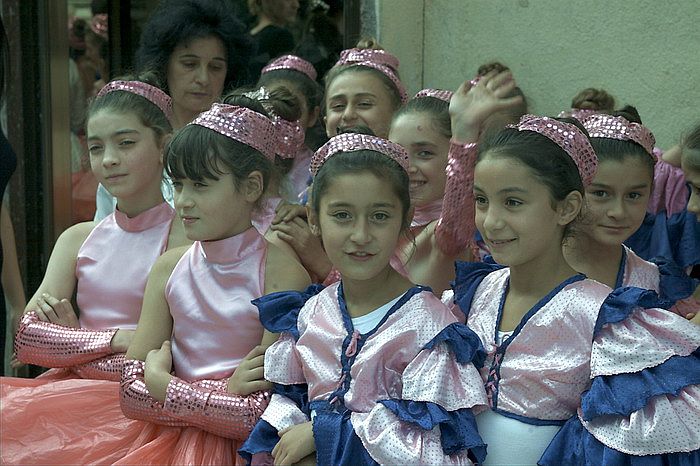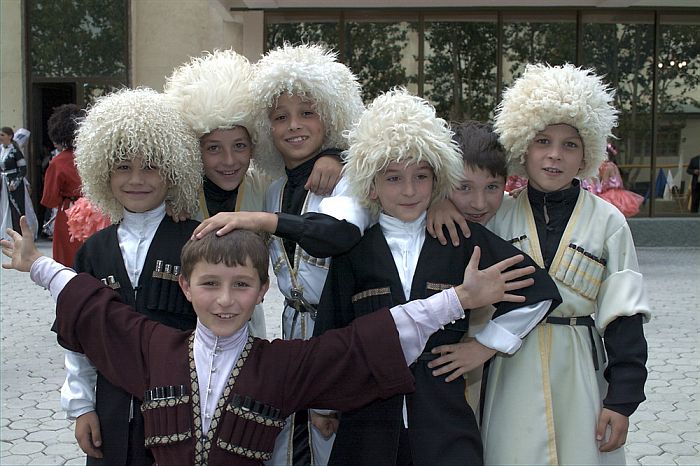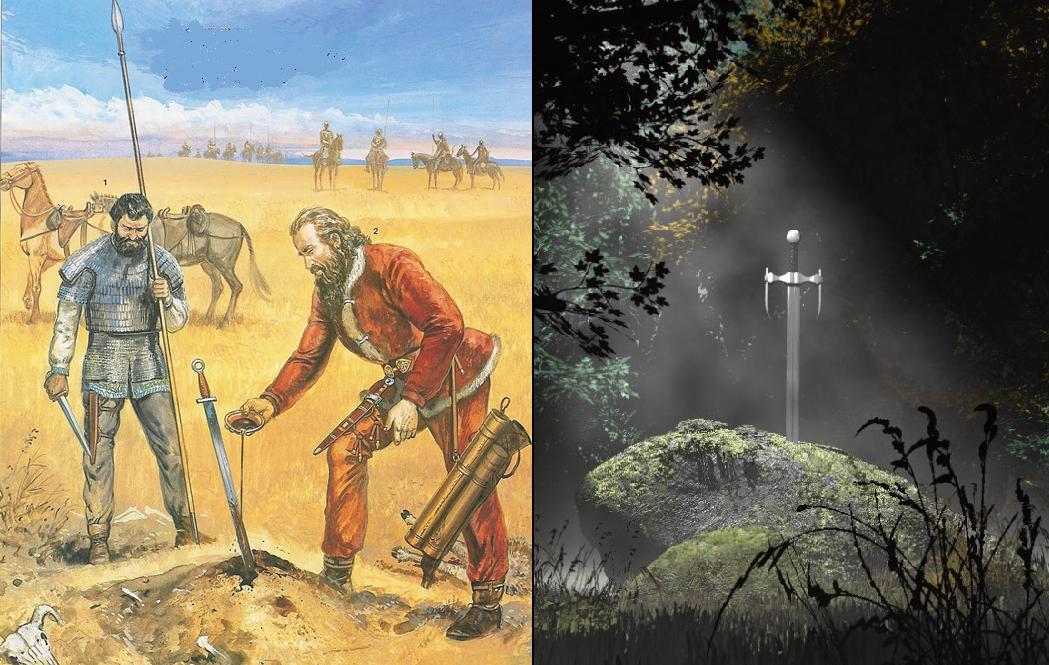This article on the Iranian speaking Alans by V. I. Abaev and H. W. Bailey first appeared in the Encyclopedia Iranica on December 15, 1984. The Alans were an ancient Iranian tribe of the northern (Scythian, Saka, Sarmatian, Massagete) group, known to classical writers from the first centuries CE.
Kindly note that a number of pictures displayed in the Compareti article below are from Kaveh Farrokh’s lectures at the University of British Columbia’s Continuing Studies Division , Stanford University’s WAIS 2006 Critical World Problems Conference Presentations on July 30-31, 2006 and Farrokh’s textbook Shadows in the Desert: Ancient Persia at War-Персы: Армия великих царей-سایههای صحرا–.
=====================================================
Alans, an ancient Iranian tribe of the northern (Scythian, Saka, Sarmatian, Massagete) group, known to classical writers from the first centuries A.D. (see, e.g., Seneca, Thyestes 630; Annaeus Lucan, Pharsalia 8.223, 10.454; Lucian, Toxaris 51, 54, 55, 60; Ptolemy, Geographia 6.14.3, 9, 11; and other sources below).
The name of the Alans appears in Greek as Alanoi, in Latin as Alani or Halani. The same tribes, or affiliated ones, are mentioned as the Asaioi (Ptolemy 5.9.16), Rhoxolanoi, Aorsoi, Sirakoi, and Iazyges (Strabo 2.5.7, 7.2.4; 11.2.1, 11.5.8; 7.2.4). In early times the main mass of the Alans was settled north of the Caspian and Black seas. Later they also occupied the Crimea and considerable territory in the northern Caucasus. The history of the Alans can be divided into three periods: (1) from the beginning of the Christian era to the great migration of peoples; (2) from that period to the Mongol invasion; (3) subsequent to the Mongol invasion. During the first period, the Alans appear as a nomadic, warlike, pastoral people who were professional warriors and took service, at various times, with the Romans, Parthians, and Sasanians. Their cavalry was particularly renowned. They participated in Mithridates’ wars with Rome (chronicled by Lucan), as well as in Roman campaigns in Armenia, Media, and Parthia in the 1st and 2nd centuries A.D. (see Josephus, Jewish Wars 7.244-51,Antiquities 18.97; cf. accounts in Moses of Khoren, History of the Armenians [Langlois, Historiens II, pp. 105-06, 125] and the Georgian Chronicle [Kartlis tskhovreba, in M. F. Brosset and D. I. Chubinov, Histoire de la Georgie I, St. Petersburg, 1849]). Ammianus Marcellinus (31.2) describes the Alans’ nomadic economy and warlike customs. The invasion of the Huns split the Alans into two parts, the European and the Caucasian. Some of the European Alans were drawn into the migration of peoples from eastern into western Europe. With the Germanic tribes of Visigoths and Vandals they passed into Gaul and Spain, some even reaching North Africa. The Alans fought on the side of the Romans in the battle of the Catalaunian Fields (A.D. 451), when Aetius defeated Attila, chief of the Huns. In 461 and 464 they made incursions into Italy. After Attila’s death they struggled, together with the Germanic tribes, to free themselves from Hun domination. Large Alan hordes settled along the middle course of the Loire in Gaul under King Sangiban and on the lower Danube with King Candac (the historian Jordanes sprang from the latter group). Another settlement is indicated by the name of the Spanish province Catalonia, which is but a slight deformation of Goth-Alania, “province of the Goths and Alans.” The French proper name “Alain” and English “Alan” are an inheritance from the tribe. The Alans also left an imprint on Celtic folk-poetry, e.g., the cycle of legends concerning King Arthur and his knights of the Round Table (see M. Hesse, “Iranisches Sagengut im Christlichen Epos,” Atlantis 1937, pp. 621-28; J. H. Grisward, “Le motif de l’épée jetée au lac: la mort d’Arthur et la mort de Batradz,” Romania 90, 1969, pp. 289-340). Part of the European Alans remained in the lands bordering the Black Sea, including the Crimea. The Caucasian Alans occupied part of the Caucasian plain and the foothills of the main mountain chain from the headwaters of the Kuban river and its tributary, the Zelenchuk (in the west), to the Daryal gorge (in the east). They became sedentary and took to cattle-breeding and agriculture. Towns developed, elements of state organization appeared, and political and cultural ties were established with Byzantium, Georgia, Abkhazia [see Abḵāz], the Khazars, and Russia. Dynastic marriages were concluded with these countries. From the 5th century on, Christian propaganda was conducted, first by Byzantine, later also by Georgian, missionaries. The Alans adopted Christianity in the 10th century, and an Alan episcopal see was created. In 244/857 Boḡā, a general of the caliph of Baghdad, invaded Transcaucasia and the northern Caucasus, devastating Georgia, Abkhazia, the Alan country, and the Khazar lands. The Alans soon recovered, however, and restored their state. They are often mentioned by medieval writers, both western (Procopius of Caesarea, Menander, Theophanes of Byzantium, Constantine Porphyrogenitus) and Arab and Persian. The latter use the name “Alān” or “Ās”; and in Russian chronicles and Hungarian sources the form “Yas” is found. In the 4th/10th century the Arab historian Masʿūdī indicates that the Alan kingdom stretched from Daghestan to Abkhazia. He describes its prosperity: “The Alan king (can) muster 30,000 horsemen. He is powerful, very strong and influential (among?) the kings. The kingdom consists of an uninterrupted series of settlements; when the cock crows (in one of them), the answer comes from the other parts of the kingdom, because the villages are intermingled and close together” (trans. V. Minorsky, A History of Sharvan and Darband, Cambridge, 1958, pp. 156-60). The anonymous Ḥodūd al-ʿālam (trans. Minorsky, pp. 83, 161, 318, 445) describes Alania as a vast country with 1,000 settlements; the people included both Christians and idol-worshipers, mountaineers and plain-dwellers. The text makes the important statement that, in the north, the Alans bordered on the Hungarians and the Bulgars (the ancestors of the Chuvash). In the east they gave their name to the Daryal gorge, called “Gate of the Alans” (Arabic Bāb al-Lān, Persian Dar-e Alān, hence Daryal). The Mongol invasion of the 7th/13th century and Tamerlane’s wars in the 8th/14th proved fatal to the Alan state. Its organization was destroyed, and the population suffered heavy loss. Ebn al-Aṯīr reports: “The Tatars attacked the Alans; they massacred them, committed many outrages, plundered and seized prisoners, and marched on against the Qipchaqs” (XII, p. 252; for the events of 1221 A.D., seeCamb. Hist. Iran V, p. 311). The remnants of the Alans broke up into three groups. One retreated into the foothills and gorges of the central Caucasus and lives there up to the present [see Ossetes], numbering some 400,000. The people of their eastern branch call themselves “Ir”, those of the western branch “Digor.” The name “Alan” survives among them, in the form “Allon”, only in folklore. (Russian “Osetiny” is from Georgian Oseti, “Alania.” The Georgians had long called the Alans Os- or Ovs- and their country Oset-.) A second group of Alans migrated with the Qipchaqs (Comani) into Europe, settling in Hungary. The territory they occupied is to this day called Jászság, “province of the Yas;” and its capital is Jászberény. They preserved their language and ethnic identity until the 15th century, but gradually adopted the Hungarian language and became assimilated. The third group took service under the Mongol khans. According to the Chinese chronicle Yuan-shi, these “Asu” played an important role in further Mongol expansion. The Catholic missionary John de Marignolli, who spent five years in China, states that there were up to 30,000 Ās there (H. Yule, Cathay and the Way Thither III [Hakluyt Society, second ser., no. 37], London, 1914, pp. 180ff.). In the course of time they perished in warfare or were absorbed into the local population. The name “Alan” is derived from Old Iranian *arya-, “Aryan,” and so is cognate with “Īrān” (from the gen. plur. *aryānām). The ancient Alan language may, to some extent, be reconstructed on the basis of modern Ossetic (after excluding the latter’s Turkic and Caucasian additions). The Alans created no writing, and no texts survive in their language except an inscription in Greek letters on a tombstone from the headwaters of the Kuban (Grund. Iran. Phil. I, Anhang, p. 31). A few sentences are recorded by the Byzantine author Tzetzēs (Gerhardt, “Alanen und Osseten,” pp. 37-51). Modern-day Ossetian girls in traditional attire in Tskhinval (Source: Ossetians.com). Various personal, ethnic, and place names are also known (see M. Vasmer, Die Iranier in Südrussland, Leipzig, 1923, pp. 25-29). This material at least indicates clearly the Iranian character of the Alan language. Modern-day Ossetian boys in in Tskhinval attired in Kafkaz dress (Source: Ossetians.com). The Ossetians of the Caucasus speak an ancient Iranian language akin to modern Persian and Kurdish. Bibliography Yu. Kulakovskiĭ, Alany po svedeniyam klassicheskikh i vizantiĭskikh pisateleĭ, Kiev, 1899. Vs. Miller, Osetinskiye etudy III, Moscow, 1887, pp. 39-116. W. Tomaschek, “Alani,” Pauly-Wissowa I/2 (1893), col. 1282-85. E. Täubler, “Zur Geschichte der Alanen,” Klio 9, 1909, pp. 14-28. Bleichsteiner, Das Volk der Alanen (Berichte des Instituts für Osten und Orient 2), Vienna, 1918. G. Vernadsky, “Sur l’origine des Alains,” Byzantion 16, 1942-43, pp. 81-86. Idem, “Der sarmatische Hintergrund der germanischen Völkerwanderung,” Saeculum 2, 1951, pp. 340-92. V. I. Abaev, Osetinskiĭ yazyk i fol’klor I, Moscow and Leningrad, 1948, pp. 248-70. D. Gerhardt, “Alanen und Osseten,” ZDMG 93, 1939, pp. 33-51. Vaneyev, Srednevekovaya Alania, Stalinir, 1959. Z. D. Gagloĭti, Alany i voprosy etnogeneza osetin, Tbilisi, 1966. V. Kuznetsov, Alania v X-XIII vv., Ordzhonikidze, 1971. W. Barthold and V. Minorsky, “Alan,” EI2 I, p. 354. B. S. Bachrach, The History of the Alans in the West, Minnesota, 1973. Additional Notes An inscription of A.D. 238-44 was set up in Ribchester, Lancashire, England, by the local Sarmatian veterans who had been sent to Britannia in 175 by Marcus Aurelius (161-80). He had defeated Sarmatians in 175, taken some of them into the Roman army, and adopted, as victor, the name Sarmaticus. The inscription reads “numerus equitum Sarmatarum Bremetennacensium Gordianus” (N. EQQ. SARM. BREMETENN. GIORDANI). It is published with a commentary by I. A. Richmond, “The Sarmatae, Bremetennacum veteranorum, and the Regio Bremetennacensis,”Journal of Roman Studies 1945, pp. 15-29. The road through Rheims was called the Via Sarmatarum. The Poles at one time meditated calling their country Sarmatia. T. Sulimirski published The Sarmatians in London in 1970. The earliest reference to the Sarmatians is in the Avesta, Sairima-, which is in the later epic Slm *Sarm and Salm. Tamar (r. 1184-1212), queen of Georgia in its golden age, was daughter of King Georgi III and his consort Burduḵan, the daughter of the Ossetic prince Ḵuddan. Tamar’s consort, Soslan, was an Ossete. Konstantinos VII Porphurogennetos entitled the ruler of Alania exousiokratōr(De administrando imperio 11.11, ed. Moravcsik and Jenkins, 1949), andexousiastēs (Book of Ceremonies 2.48). The Gate of the Alans (not Albanians) is named in the inscription of Šāpūr I, Parthian 2 (the Persian and Greek are lacking) TROA ʾlʾnn, and in the Kartīr inscription BBA ʾlʾnʾn, that is Dar Alānān (with the two Aramaic words TROAand BBA “gate”). The Archbishop of the Alans in the 13th century was named Theodoros (Kulakovskiĭ, Alany, p. 58). Masʿūdī’s ʾrsyh *arsiyah is discussed by T. Lewicki, “Un peuple iranien peu connu: les *Arsīya ou *Orsīya,” Hungaro-Turcica, Studies in Honour of Julius Németh, Budapest, 1976. The Ās, Āṣ are cited by Minorsky, Ḥodūd al-ʿālam, pp. 445, 481. The modern Ossetes use Āsi, with the adjective āsiāg, of the neighboring Balkar (who speak Turkish). Similarly the Megrel (Mingrelians) call the Karačai, who speak Turkish, Alani. In Megrel also alani kʾoči is “heroic man” and alanuroba is “tournament.” The Mongols used As, plural Asut, adjective Asutai, of the Ās of the Caucasus, of whom they took part to act as Qubilai Khan’s Imperial bodyguard in Khan-baliq, Ta-tu “Great City” (the later Peking). From there these As (Alans) wrote letters to Rome for Christian teachers (see A. C. Moule, Christians in China before the year 1550, London, 1930, pp. 196, 253-54, 260-63). The Alans in the West are well documented by B. S. Bachrach, The History of the Alans in the West, Minnesota, 1973. The name Ās was changed in Slavonic and Hungarian to Iās (Yās, Jász). The Iaskiy Torg “Iās Market” is the modern Jassy. In Hungary the Jász settled east of Budapest in the Jászsag district, with their chief city Jász-berény, and other places with the name Jász. A manuscript of A.D. 1422 contains a short vocabulary Jász-Latin in which the words are clearly near to modern Ossetic. There is a facsimile and full study by J. Nemeth, Eine Wortliste der Jassen, der ungarländischen Alanen, Berlin, 1959; see further R.-P. Ritter, Acta orientalia hungarica 30, 1976, pp. 245-50. The Jász loan-words in Hungarian were treated by H. Sköld Die ossetischen Lehnwörter im Ungarischen, Lunds Unversitets Årsskrift 20, 1925. The region Alaneṭʿi is briefly cited by the Prince Vakhušt, Geograpʿiuli aγcʾera, Description géographique, 1842, p. 413. Iohannēs Tzetzēs (ca. 1110-1180) wrote of himself as of a pure Hellenic father and of an Abasgian mother. Among citations of foreign phrases he had one in Alanic. This reads tapanchas (glossed kalē hēmera sou), mesphili (authenta mou), chsina (archontissa), korthin . . . (pothen eisai), to pharnetzi kintzi (ouk aischinesai), mesphili (authentria mou), kaiterfoua(sm)ougg (not glossed). Earlier interpretations are in D. Gerhardt, ZDMG 93, 1939, pp. 33-51. It may be explained thus: dä bon xuarz; meʾfsinäi (vocative singular); äxsinä; ku . . . (not clear); du farnäd`in kindä äi “you have been made happy;” for the final unglossed phrase possibly: käi de ʾrfua *äm uingä “that your blessing is fully felt.”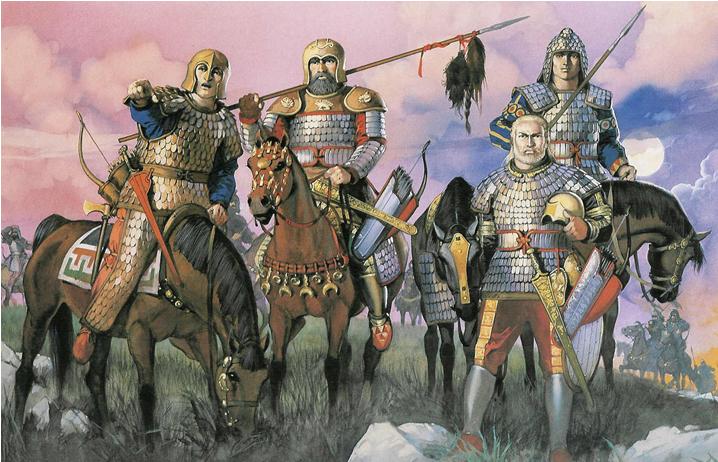
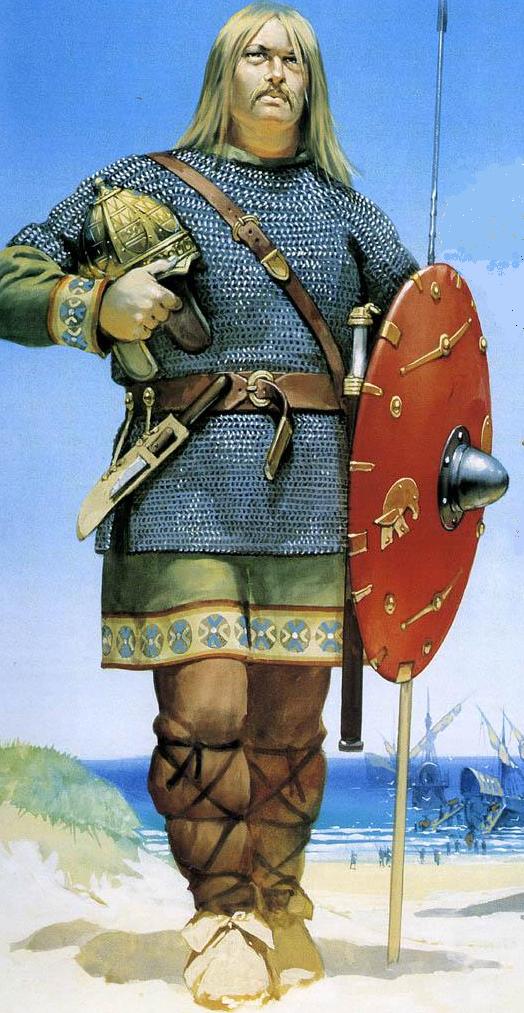 [Click to Enlarge] Iranian-speaking Alan warrior circa 5th century CE. The descendants of the Alans are found in Western and northern Iran as well as the Caucasus and Eastern Europe. Large numbers of Alans also assimilated with Europe’s Germanic tribes, notably the Ostrogoths (Painting by the late Angus McBride).As noted by Professor Abaev and bailey in this article “The name “Alan” is derived from Old Iranian *arya-, “Aryan,” and so is cognate with “Īrān” (from the gen. plur. *aryānām)“.
[Click to Enlarge] Iranian-speaking Alan warrior circa 5th century CE. The descendants of the Alans are found in Western and northern Iran as well as the Caucasus and Eastern Europe. Large numbers of Alans also assimilated with Europe’s Germanic tribes, notably the Ostrogoths (Painting by the late Angus McBride).As noted by Professor Abaev and bailey in this article “The name “Alan” is derived from Old Iranian *arya-, “Aryan,” and so is cognate with “Īrān” (from the gen. plur. *aryānām)“.
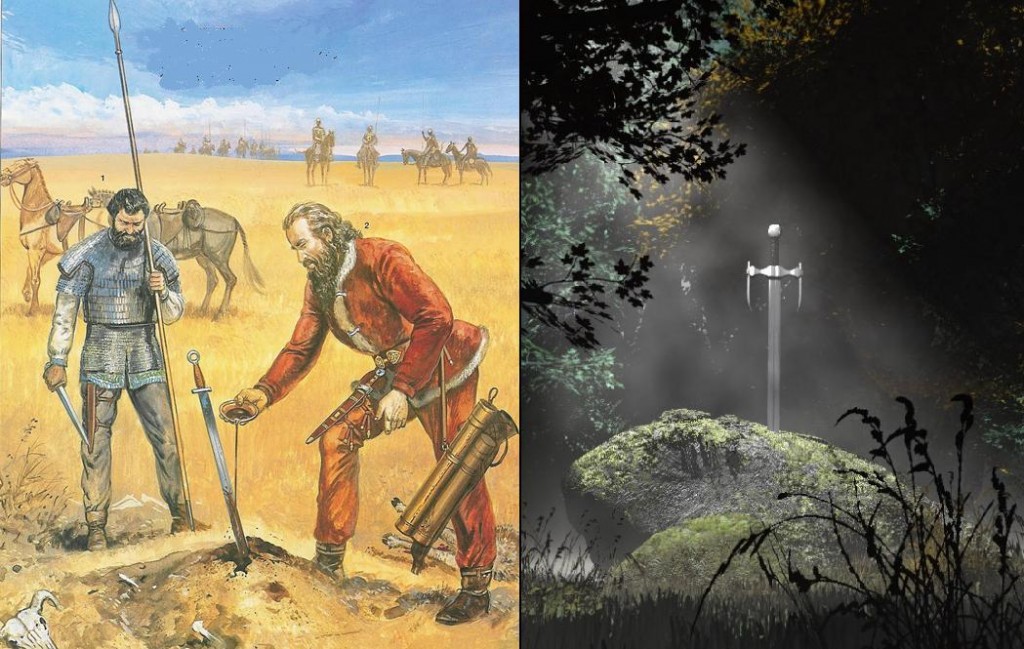 [Click to Enlarge] (left) A reconstruction by Brzezinski and Mielczarek (2002 ) of Iranian-speaking Sarmatian warriors paying their respects to a fallen comrade in Europe (circa 1st century AD) – note the ritual of thrusting the fallen comrade’s sword into the earth. At right is a screenshot of the Excalibur sword of King Arthur thrust into the stone (Movie “Excalibur“, 1981, John Boorman). This is one of many parallels between the Arthurian legends and the mythologies of the ancient Iranians (Pictures used in Kaveh Farrokh’’s lectures at the University of British Columbia’s Continuing Studies Division).
[Click to Enlarge] (left) A reconstruction by Brzezinski and Mielczarek (2002 ) of Iranian-speaking Sarmatian warriors paying their respects to a fallen comrade in Europe (circa 1st century AD) – note the ritual of thrusting the fallen comrade’s sword into the earth. At right is a screenshot of the Excalibur sword of King Arthur thrust into the stone (Movie “Excalibur“, 1981, John Boorman). This is one of many parallels between the Arthurian legends and the mythologies of the ancient Iranians (Pictures used in Kaveh Farrokh’’s lectures at the University of British Columbia’s Continuing Studies Division). 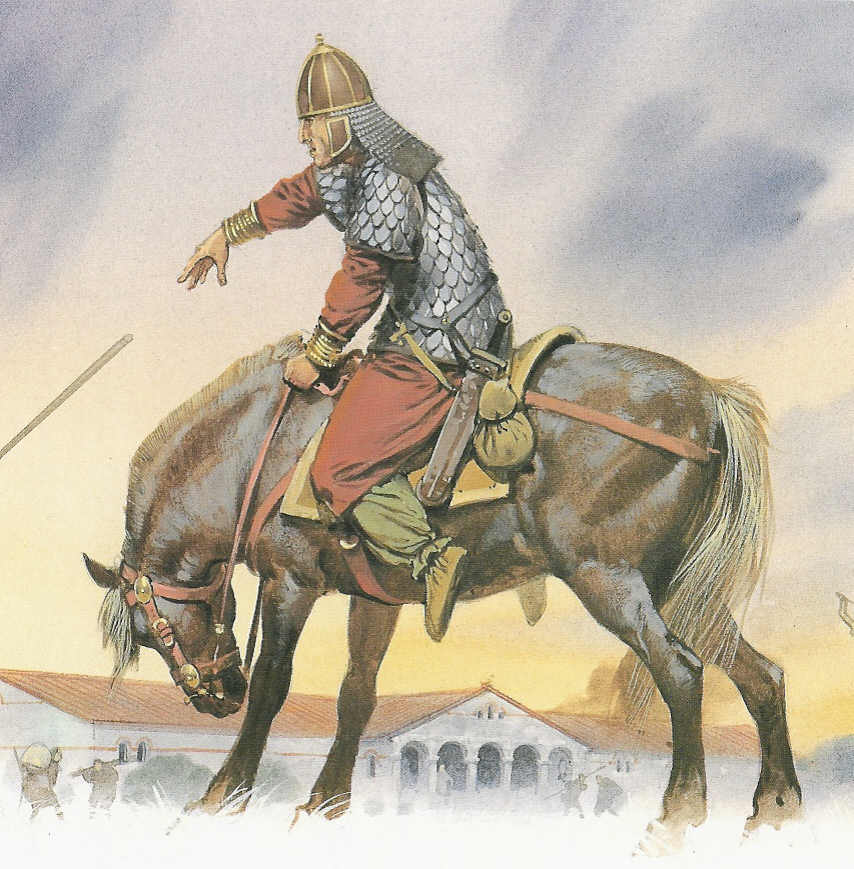 [Click to Enlarge] Alan warrior in combat at Orleans (circa 451 CE). Many of these Iranian speakers settled in what is now modern France and assimilated into the local population. To this day their legacy resonates in Eastern Europe with names such as Alan, Alana, Irene, and Rita. The Alans are now believed to have introduced much of their folklore into the Arthurian legends of the British Isles. Painting by Angus McBride.
[Click to Enlarge] Alan warrior in combat at Orleans (circa 451 CE). Many of these Iranian speakers settled in what is now modern France and assimilated into the local population. To this day their legacy resonates in Eastern Europe with names such as Alan, Alana, Irene, and Rita. The Alans are now believed to have introduced much of their folklore into the Arthurian legends of the British Isles. Painting by Angus McBride.
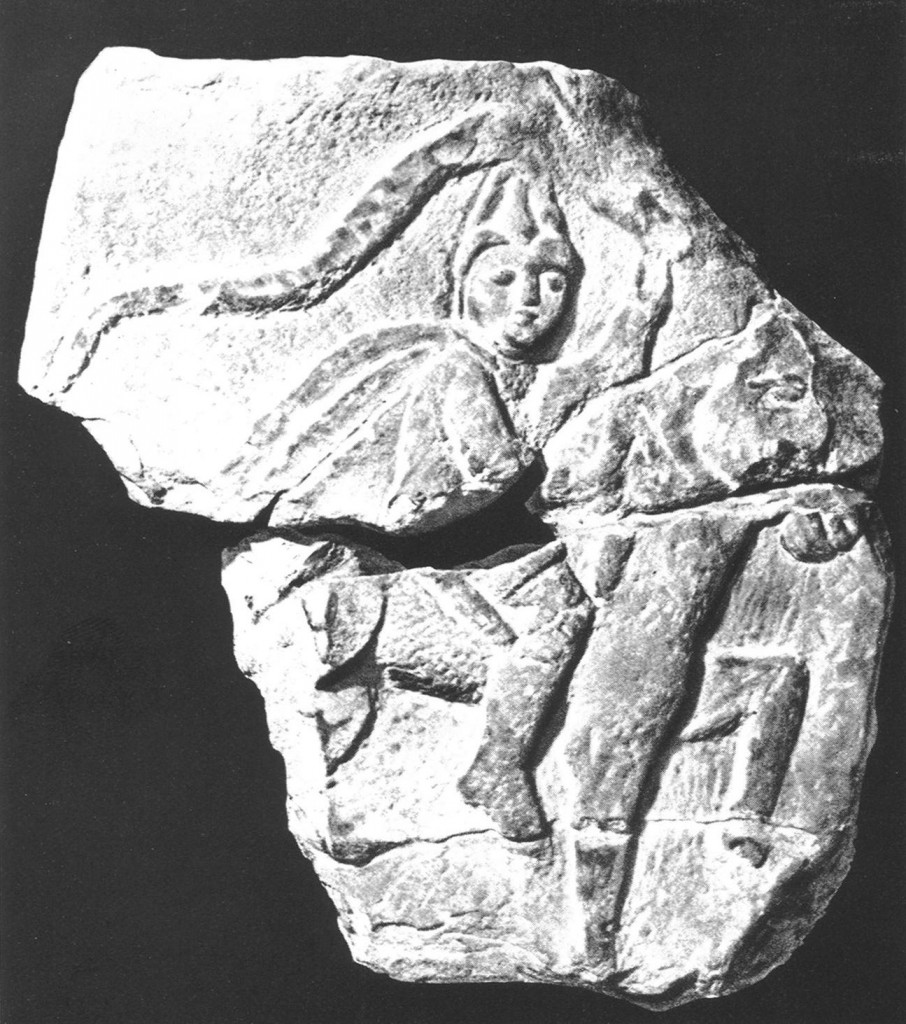 [Click to Enlarge] Sarmatian warrior clad in scale armor. Fluttering behind him is the distinctive Iranian battle standard, a dragon made like a windsock. Fragments of a funeral stele from the Roman camp at Chester, England. Chester Museum. Photo: Chester Archaeological Society. From The Sarmatians (New York, 1970), pl. 46.
[Click to Enlarge] Sarmatian warrior clad in scale armor. Fluttering behind him is the distinctive Iranian battle standard, a dragon made like a windsock. Fragments of a funeral stele from the Roman camp at Chester, England. Chester Museum. Photo: Chester Archaeological Society. From The Sarmatians (New York, 1970), pl. 46.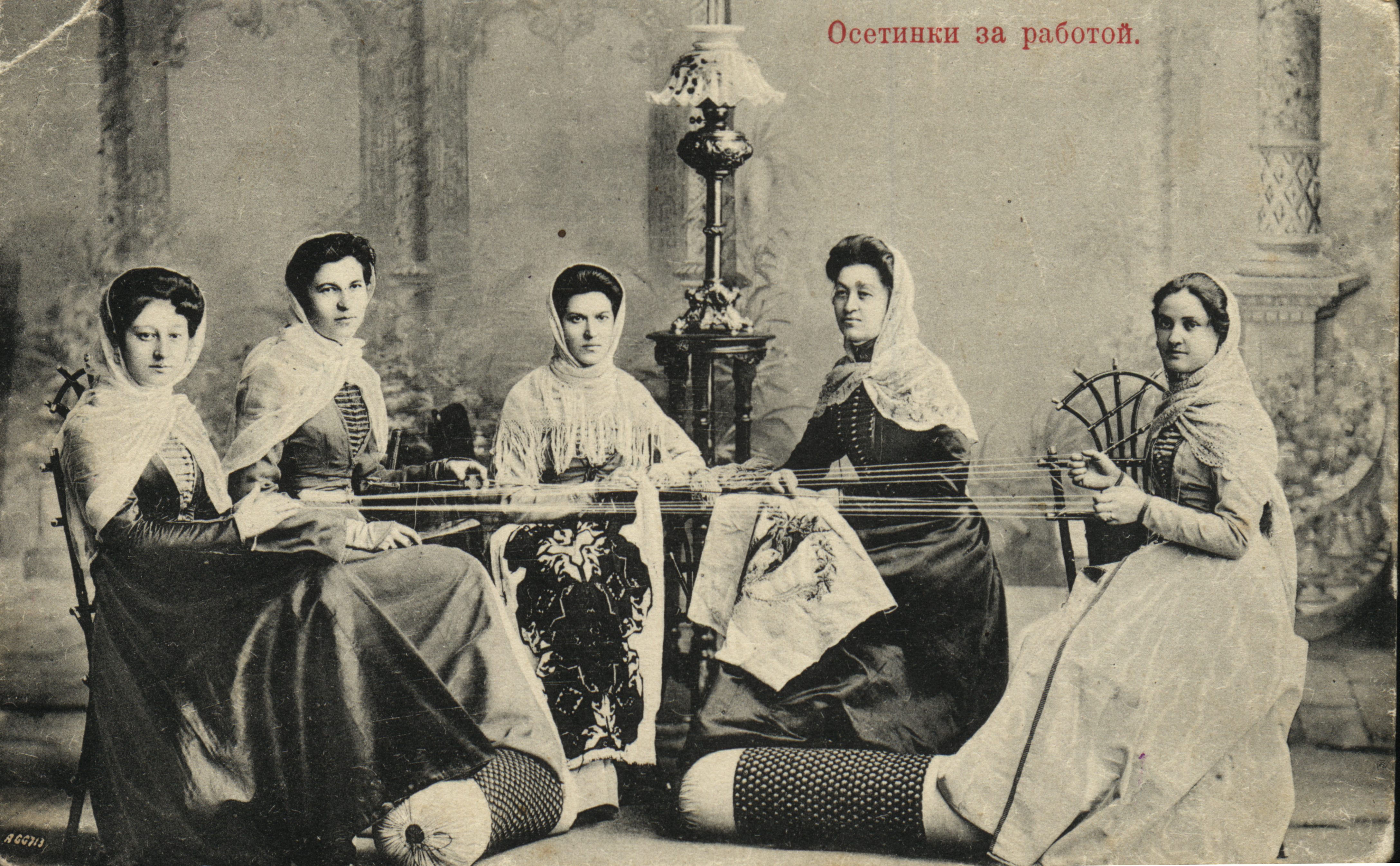 [Click to Enlarge] A Russian photograph of Ossetian women of the northern Caucasus working with textiles in the late 19th century CE. Ossetians are the descendants of the Iranian speaking Alans who migrated to Eastern Europe, notably former Yugoslavia, and modern-day Rumania and Hungary (where their legacy remains in the Jasz region).
[Click to Enlarge] A Russian photograph of Ossetian women of the northern Caucasus working with textiles in the late 19th century CE. Ossetians are the descendants of the Iranian speaking Alans who migrated to Eastern Europe, notably former Yugoslavia, and modern-day Rumania and Hungary (where their legacy remains in the Jasz region). 